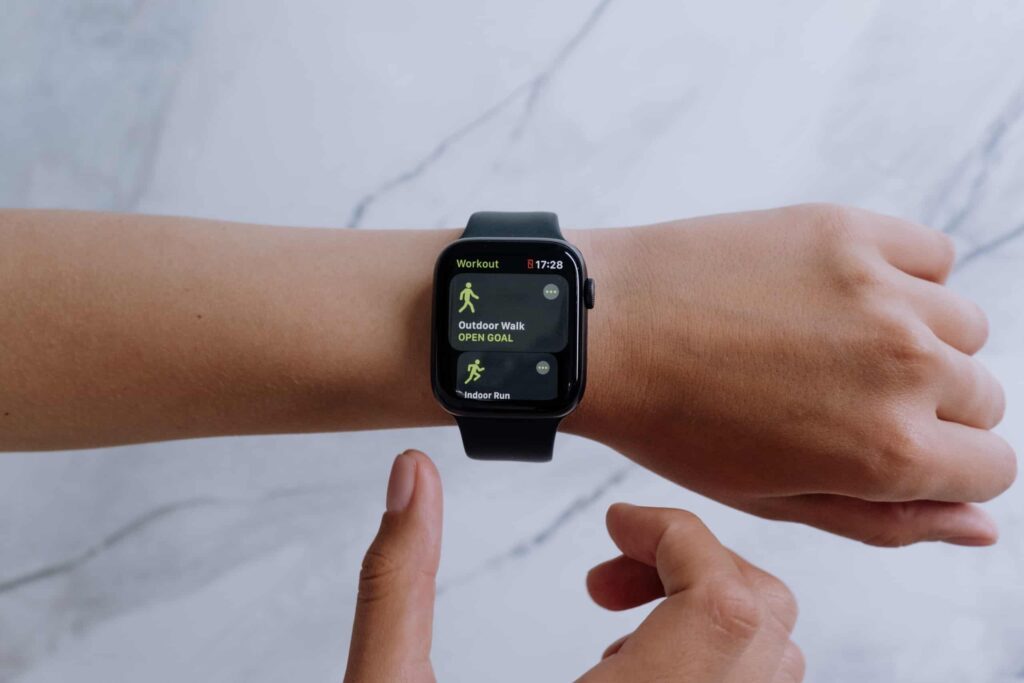When an app’s UX has the mobile industry and customers drooling, it’s not magic or luck.
Instead, it’s based on a deep understanding of the user, an understanding that can come from both qualitative and quantitative insights.
In this post, I want to talk about the importance of attaining these insights and how design teams, startups and brands can be more effective at conducting UX research. It’s my hope that you will learn from these strategies we’ve used to successfully build and design mobile apps for brands across multiple industries.
Let’s get started.
What Is UX Research, Exactly?
That’s a question we’re often asked before we start our App Blueprint process with new clients. For starters, it’s important to recognize that UX stands for user experience. The user experience is what happens when customers encounter your product in the wild. It’s the way users interact with your interface, it’s the way they share your app with their friends, and it’s the motivations that determine whether they stay or go.
UX research gives you a better understanding of what will happen when your product is released to the public. It helps you learn about the people you’re building a solution for and increases the likelihood that you’ll create something they love.
Why Is UX Research Important?
UX research is an important part of the product development process because it allows your team to shift from assumption-based decisions to decisions that are guided by strategic insight.
Most important, UX research gives you the opportunity to fix existing usability issues, or avoid them altogether. Whether we’re talking about a mobile app, website or cereal box, it should be every product team’s goal to build a user experience that does two key things:
- Deliver Value: The product needs to offer users the features and benefits they’re looking for.
- Easy To Use: These features and benefits should be easily accessible, and the product should be enjoyable to interact with.
If you’re building an app that doesn’t achieve these two items, people will close your app and likely never return. UX research helps you recognize which of your planned features are valuable and which are not. UX research also helps you understand why your churn rates are higher for people trying to achieve one objective vs. another. In a nutshell, UX research gives you the insight you need to improve your product and ensure that it’s easy to use and offers the value that users are looking for when they seek you out.
I’ve always loved this graphic as an example of what UX research can do for a business:

We can all remember smacking our palms against the glass bottom of a ketchup bottle until a blob of ketchup (sometimes too much) would hit our plate of french fries. The classic glass Heinz bottle had been around for years until a team decided it was time to create a design that would better serve their customers. As a result, Heinz developed a revolutionary design, resulting in happier ketchup-lovers everywhere.
Read On: When Should Startups Hire UX Designers?
What Is The Objective Of Your UX Research?
We’ve seen many companies make the mistake of conducting UX research without knowing what they’re trying to learn. The best UX researchers always identify a key objective and use it as a starting point to select the research techniques that will be most effective for uncovering valuable insights. To identify your key objective, hold a conversation with the entire team about where the product is today and where you want it to be in the future. If your app is brand new, the discussion will be more about understanding the problem that the app aims to solve, and learning from existing apps and your target audience.The goal of identifying a research objective is uncovering the best research approach to achieve it.
Here are a few of the most popular objectives of UX research:
Objective 1: Feature And Usability Testing
The majority of UX research is conducted to identify what features matter and whether or not it’s easy for the user to leverage them. In most cases, the research is conducted with one of the following approaches:
Analytics Monitoring: If a product is already in the hands of users, the right technology can arm you with insights into the behavior of your users. You can track and monitor how users are interacting with different features and even run tests where you make slight adjustments to the app and see if those changes have an impact on user behavior.
Unmoderated User Testing: This form of user testing is when you’re not able to interact with the subject. Services like UserTesting.com offer you the ability to provide a series of tasks and capture video of an unmoderated user trying out your product or prototype without any form of interaction from you or your research team.
Moderated User Testing: This form of user testing is when you’re able to interact with the subject. You have tighter control over the process as you can guide them if there is a dead end in the prototype or ask targeted questions when you observe unexpected behaviour.
User Questionnaires: As users interact with your product during testing or post-launch, they give feedback to help you understand the features and usability of the app. Often combined with the options highlighted above, you can also leverage open ended questions or multiple choice questions to gain a combination of both qualitative and quantitative insights.
UX researchers tend to use the above techniques to look for insights into these areas:
- Success Rate: Did the user succeed in accomplishing their goal when using the app? How often did the user go off-track from the ideal user flow? What parts of the experience hindered the user’s success?
- User Mistakes: What mistakes did the user make? Did the user encounter any mistakes that were unavoidable? What design considerations would decrease the likelihood of user mistakes?
- Product Errors: Did anything within the app not work as planned? Did users accomplish what they wanted, but encounter an experience that wasn’t predicted?
- Retention Potential: How easy was it for the user to learn how to use the app? How many tries did it take the user to achieve success? Were certain behaviors easier for the user after the first time? Were some features not clear to the user?
A combination of qualitative and quantitative insights can help you better understand the answers to each of these questions. Using the research techniques above, you will be more likely to identify the features that matter to customers and the roadblocks holding people back from having an optimal user experience.
Objective 2: User Experience Preference
If you’ve ever worked with experienced digital marketers, you’ve likely encountered people who want to test everything. When you decide to conduct research to identify UX preferences, you’re opening the door to testing anything and everything within the product that could possibly be subjective.
For example, if one member of your team thinks a button should be orange and another thinks it should be blue, UX preference tests will help you decide. This type of research can also help you determine whether the button text should say “Submit” or “Send.”
When the objective is to identify user preferences, the solution is usually an A/B or multivariate test that shows users a variety of options and lets their behavior speak for them. For example, you could give your button three text variations and see which copy generates the most clicks amongst your users.
While this might seem a bit much, there have been cases in which a simple color change increased sales for an ecommerce app. In a space where every dollar matters, the difference between orange and blue could be more important than you initially think.
Objective 3: Competitive Research And Analysis
While it might be impossible to glean data from your competitors, it’s not impossible to learn from them. Two great ways to learn from your competition through UX research are monitored user testing and user surveys. With either method, you acquire specific insights into what people are thinking when they use your competitor’s product.
To conduct a monitored test, you can arm your target audience with a competitor’s app and watch how they interact with it. In addition to asking your target audience to conduct this test, you can invite some of the competition’s actual customers to help you with the research.
Once you’ve identified your competitor’s customers, surveys can become a goldmine for gaining UX insight. Not only can you ask people questions like why they decided to use this app, but you can also gain insight into how they found it and what has motivated them to stay.
In each of these scenarios, you’ll be getting closer to your users and gaining knowledge to make better product decisions. Even after spending months reading about your target audience and trying to design a product that meets their needs, you can’t compete with the real experience of UX research.
The reality is this: UX research isn’t just a nice-to-have.
It’s an important part of the product development process and can be the difference maker between launching an app that ends up in the graveyard and launching one that ends up at the top of the app store.
If you’re interested in learning more about product design, check out these books recommended by product people for product people. And if you’re interested in conducting UX research for your app, our App Blueprint process might be a great solution for your business or startup.
We’re always interested in chatting with people about their app ideas and business goals. If you’d like to schedule some time to chat, get in touch!



